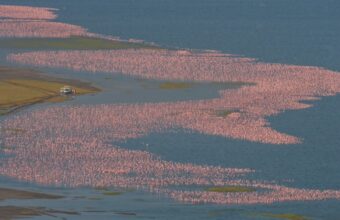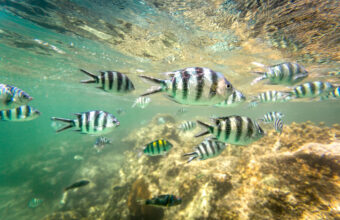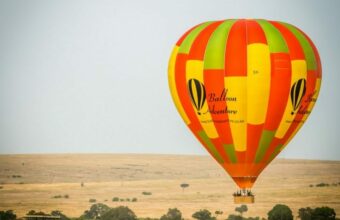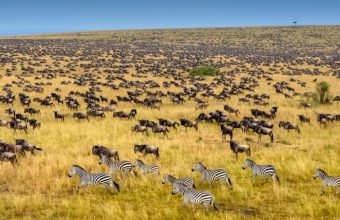Kenya off the beaten track
Last updated 27 Feb 2024
The parks and reserves covered in my Kenya safari guide are only the best-known and most visited of the country's numerous protected and other natural areas.
For those who want to explore the natural history of this diverse nation in more detail the following parks and reserves are all well worth a visit.
But, even this list is far from complete and for every park listed here there are two or three other reserves, forest areas, parks or conservancies that all have something special to offer.
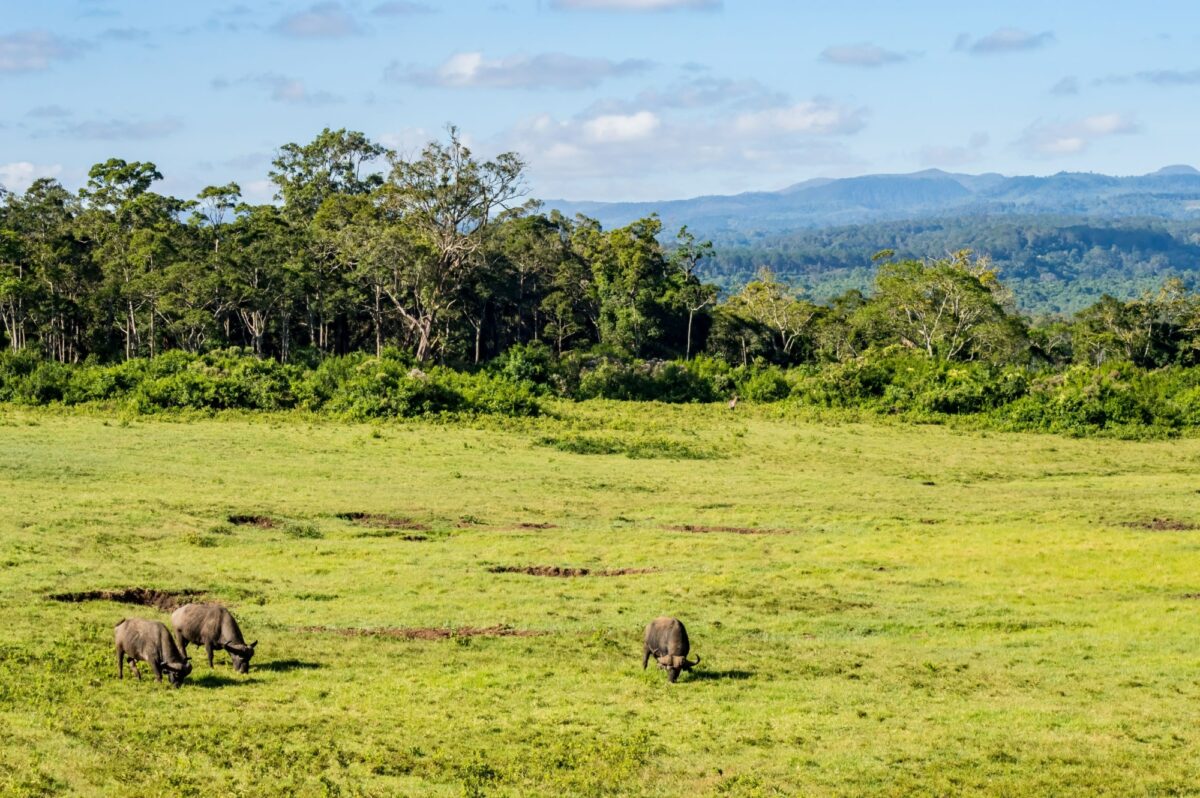
Buffalos grazing in Aberdare Park
Off the beaten path in Kenya
Some of Kenya's underrated hidden gems
-
Aberdare National Park
-
Kakamega Forest Reserve
-
Ruma National Park
-
Saiwa Swamp National Park
-
Chyulu Hills National Park
View trips -
Lake Naivasha
View trips -
Chalbi Desert
-
Lake Bogoria National Reserve
-
Watamu Marine National Park
-
Shimba Hills National Reserve

Aberdare National Park
Hiking in Aberdare National Park
A world away from the African safari image of savannah grasses and drooling sunsets, the Aberdares consists of two different ecosystems. A high, cold and often bleak moorland and, below that, dense tangled montane jungle.
The wildlife here is a little different and a little harder to spot. But elephants are very common as are big grumpy buffalo. There are also montane species you won’t see anywhere else including bongo antelope, bush pigs and melanistic leopard and serval.
Unusually among Kenyan national parks, you can also get out of the vehicle here and enjoy long, lonely hikes over the moorlands: I have really enjoyed the sensation of trudging across the bleak moorlands in cold afternoon drizzle while always keeping a beady eye out for roaming buffalo.
The park also has some history. In 1952, a young English lady named Elizabeth was staying at the famed Treetops Lodge here (today’s version is actually a reconstruction of the original) when it was announced that her father had died. And so it was, that on a remote Kenyan mountain slope, that young lady became Queen Elizabeth II. Many years later her eldest grandson, and future king, proposed to Kate Middleton in a small wooden fishing cabin in a spot not so far away from where his grandmother became Queen.
Read more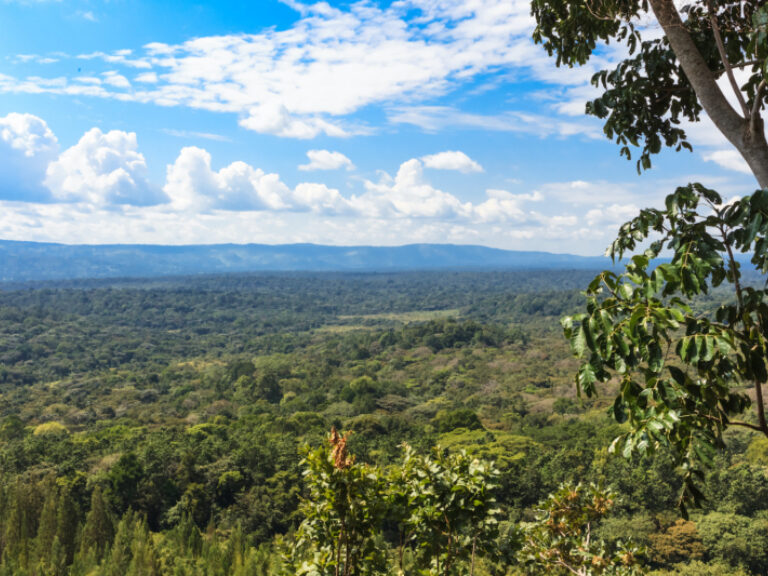
Kakamega Forest Reserve
Kenya’s safari hidden gem
Just north of the equator in far western Kenya, is Kakamega Forest — Kenya’s only tropical rainforest. The land here is wet, green and intensely cultivated with a mix of subsistence farming and large tea estates. In amongst all this though are a few pockets of the dense rainforests that once covered large parts of western Kenya.
The Kakamega Forest Reserve is a fine example of this kind of forest and interesting walking safaris here reveal bird and primate life that has more in common with the forests of Uganda and the Congo than anything you’ll see on safari in Kenya. Wander the forest’s network of trails and take in the huge variety of flora and fauna it supports, including hundreds of bird species, some of which are not found anywhere else.
In my opinion, Kakamega is one of the most delightful places in Kenya, but yet hardly any tourists know of its existence. It should be a must visit for any ornithologist or herpetologist. As well as birds, reptiles and primates, I found the visit to the old mine shaft to look for bats especially memorable.
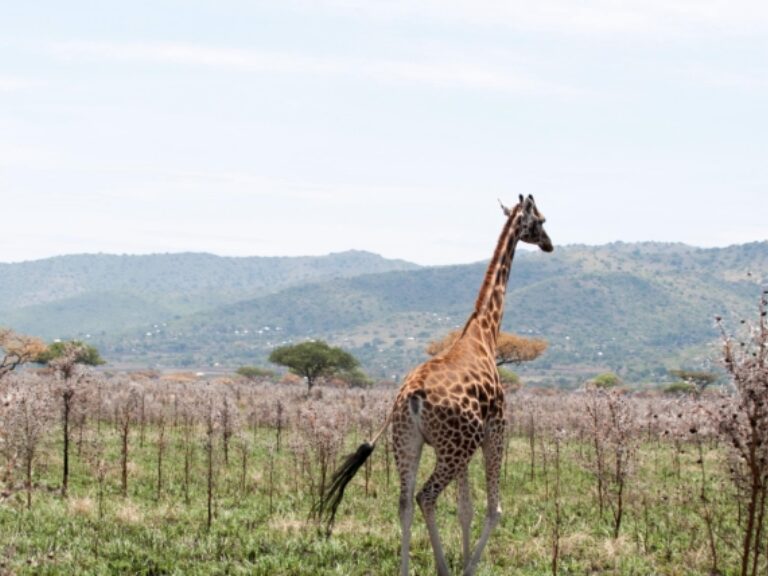
Ruma National Park
Get seriously off-the-beaten track
Another of western Kenya’s unsung wildlife highlights is the seriously off the beaten track Ruma National Park.
This park is a mixture of dense forest and thick, tall tropical grassland where large numbers of rare, and very beautiful, Rothschild giraffe can be found, as well as the massive, elegant roan antelope. On any visit here you will see plenty of these two creatures.
What you almost certainly won’t see however are the park’s rhino population. Rangers have told me there are quite a few here – all translocated from less secure areas – but in my three visits I’ve never seen any and the rangers tell me you have to be very lucky to see one.
But there’s something else you won’t see here either: other tourists. Once again I think that each time I have been I have had the entire park to myself and this makes for a very compelling reason to make the trek out here.
There are no facilities for tourists within the park, and only a few specialist operators will offer Ruma in a safari itinerary.
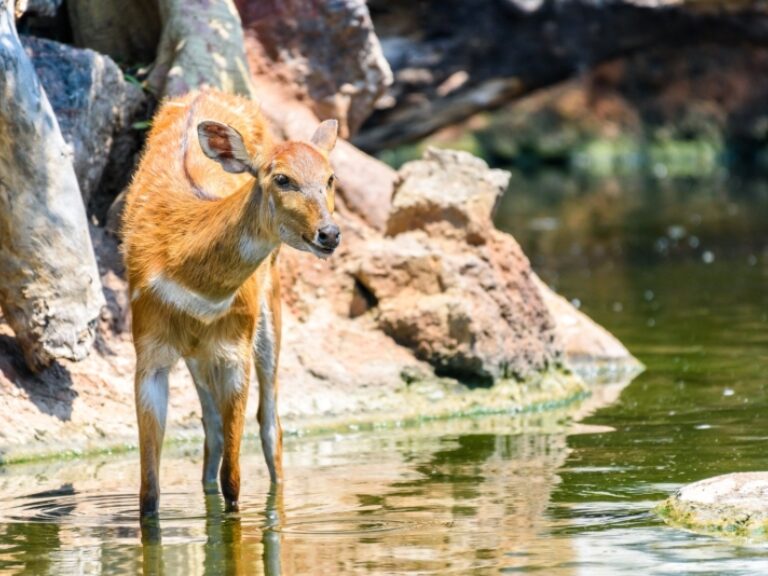
Saiwa Swamp National Park
Stretch your legs at Saiwa Swamp
Kenya’s smallest national park, Saiwa Swamp, out in the far west near the farming town of Kitale, is another of Kenya’s underrated delights.
The park encompasses one small area of swamp surrounded by farmland and is home to a rare population of sitatunga antelope, an unusual semi-aquatic species that in Kenya can only be reliably seen here.
The park also offers stunning birdlife. My favourite thing about this park is that you can only visit on foot, following the walking trails and boardwalks that run through the park. It’s a delight to break free of the safari vehicles and stretch the legs.
In addition you will almost certainly have the entire park to yourself. I’ve been three times and never seen another person here. One word of warning though: Be careful of flash floods during heavy thunderstorms. I was once caught out by one of these: the waters rose very quickly, drowning the footpaths and I had to wade thigh-deep back across the marsh while trying very hard not to think about all the creatures that might live in a remote African swamp…
There are no facilities for tourists within the park, but nearby Kitale has plenty of fairly-priced hotels.
Read more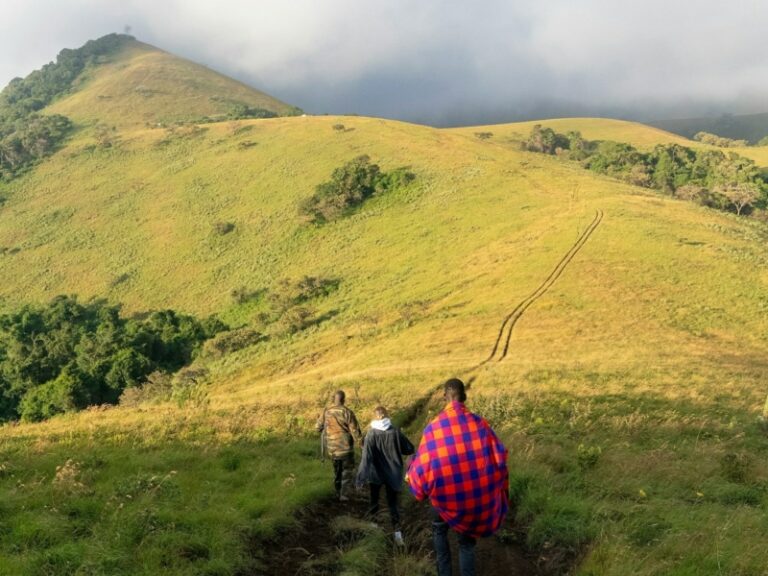
Chyulu Hills National Park
Chyulu Hills National Park
Bursting up above the hot red plains of Tsavo and Amboseli National Parks, the Chyulu Hills are a little visited, little known paradise of rolling green hills and forest.
The wildlife can be a bit hit and miss but there are still plenty of grazers around plus there are opportunities to mingle with Maasai herdsmen, walk across pretty landscapes and visit lava tubes.
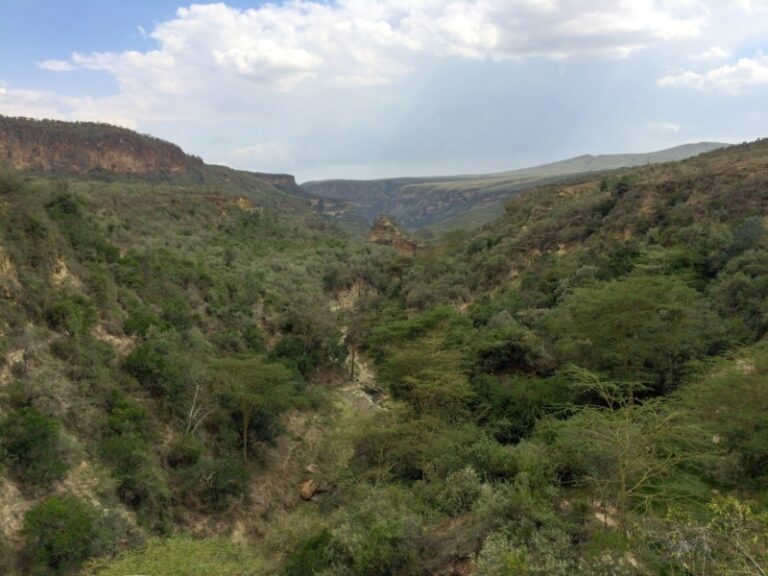
Lake Naivasha
Hells Gate National Park and Lake Naivasha
If you’re looking for a quick escape from Nairobi then Lake Naivasha and the neighbouring Hells Gate National Park is just a couple of hours from the city and a great place for a quick wildlife fix.
Lake Naivasha is a huge freshwater lake famed for its birdlife and hippos while Hells Gate is a small savanna park with plentiful antelope, zebra, giraffe and baboons. The nice thing about this park is that you can walk or cycle through it (very battered bikes can be hired) which allows you to get close to wildlife without the barriers of a vehicle. If you’re a climber then you can also arrange to scale some of the rock spires within the park.
There’s no facilities for tourists within Hells Gate but a massive array of places to stay and eat around the shores of Lake Victoria.
I recommend you avoid visiting during weekends, when it can seem as if half of Nairobi is out here.
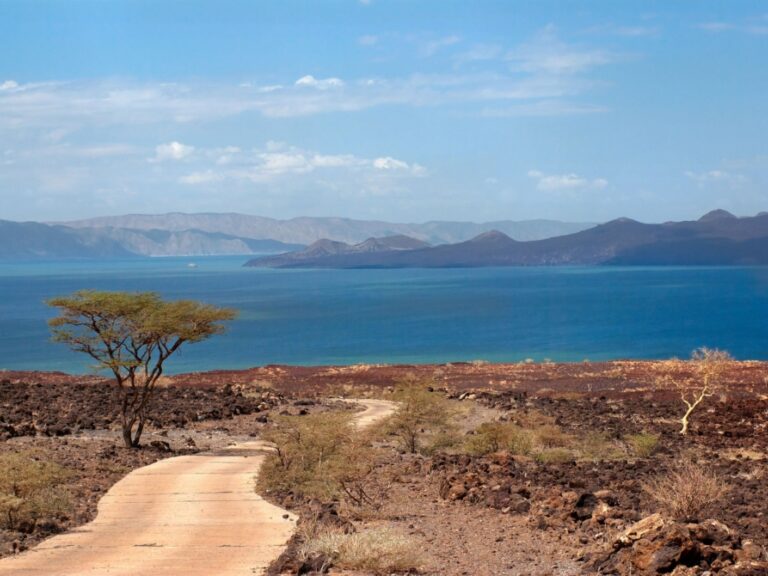
Chalbi Desert
Chalbi Desert and Lake Turkana
If you're ready to test your adventurous side, look north to the Chalbi Desert, east of the stunning and remote Lake Turkana where dry, cracked earth meets lush oases surrounded by palm trees and herds of zebra, giraffe, ostrich, oryx and hyena come to drink.
This arid part of northern Kenya is largely unvisited, even by domestic visitors. It’s unique, otherworldly landscape is believed to be formed from a lake that dried thousands of years ago. You’ll find volcanic hills in the background and desert wildlife in the sand dunes.
Thrill seekers can take part in adrenaline-filled activities like sandboarding and dune racing in 4WD vehicles alongside local residents on camelback, nights spent stargazing and perhaps even a swim in Lake Turkana, itself in a national park with good game sighting opportunities. It’s far from easy to get to Chalbi — it’s 425km north of Nairobi — so expect to fly in and then use a local driver who knows the roads and terrain (and an appropriate hardy vehicle).
Read more
Lake Bogoria National Reserve
Lake Bogoria National Reserve
Two hours drive north of the city of Nakuru, Lake Bogoria is another of Kenya’s Rift Valley soda lakes and as such when conditions are ideal it attracts tens of thousands of flamingos. Unfortunately, recent years have seen the lake waters rising and the flamingos are a less common sight than they once were.
Even so, this out of the way park is worth visiting just to see the hot springs that bubble up out of the ground around the lake. A little further north still is delightful Lake Baringo. It’s not officially protected but it’s a laid back spot to kick back and go on boat rides to see hippos, crocodiles and fish eagles.

Watamu Marine National Park
Watamu Marine National Park
For a somewhat wetter ‘safari’ don’t miss the chance to don a snorkel and mask and peer down onto the underwater life of Kenya’s finest marine reserve. The vibrant coral reefs here teem with fish and a few turtles. At certain times of year whales and dolphins can be seen much further offshore. There is also a marine park in nearby Malindi and, south of Mombasa, there’s the Kisite Marine National Park.
Safaris and wildlife viewing is certainly not limited to land in Kenya. You might be familiar with the Big Five, but there’s even more underwater — the Marine Big Five: dolphins, whales, rays, sea turtles and whale sharks. All the above as well as the beautifully colourful tropical coral reefs can be explored on a snorkelling or scuba diving trip as well as on boat tours, many run by local fishermen who have grown up in the area and know the ocean and its residents well. Watamu Marine National Park is located north of Mombasa, featuring three bays, the mangrove forest of Mida Creek and elephants and monkeys inland.
Humpback whales migrate to these waters from June each year to breed and take care of their newborn calves in the warm, protected reefs before continuing their journey to Antarctica around October. Luckily, much of the migration occurs in Watamu and nearby shores in the shoulder seasons (June and September-October) so rates for both accommodation and activities/tours are often lower.
Adrenaline junkies are also well-served here with an array of waters ports such as windsurfing and waterskiing. Anyone who prefers to relax on or near the shore is assured of pristine white sandy beaches and plenty of lively beach bars and restaurants. Watamu is one of Kenya’s leaders in eco-tourism and encouraging ethical interactions with the animals. The same attitude applies at the hotels and eco lodges in the area, many with zero-waste policies, yoga/wellness focuses and more.
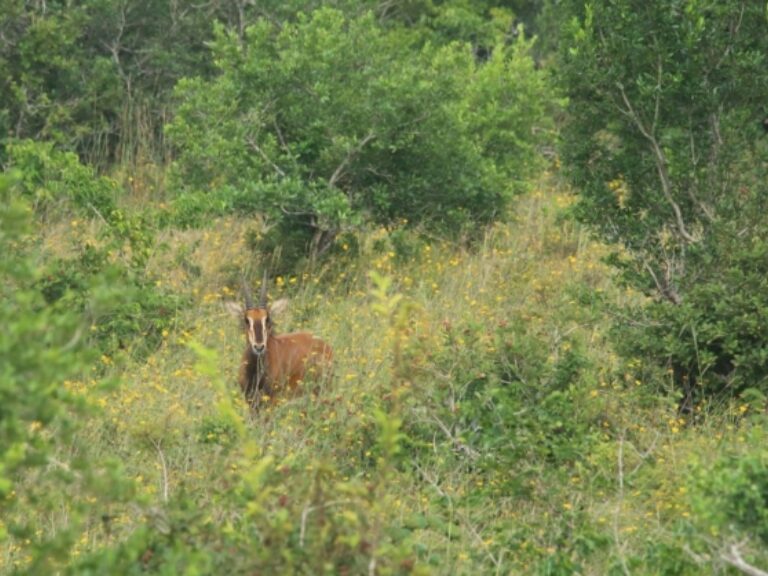
Shimba Hills National Reserve
Shimba Hills National Reserve
Just inland of the popular Diani Beach, Shimba Hills makes for a brilliant short safari from the coast. The densely vegetated park has a large and visible elephant population and is the only place in Kenya where the stately sable antelope can be seen.
There’s also plentiful warthogs, baboons, vervet monkeys, buffalo and some introduced giraffes. Half and full day safaris can be easily organised from most of the beach resorts south of Mombasa. It’s a good bet for a family safari.
About the author
Stuart Butler
Stuart is an award-winning travel journalist covering safari, trekking and conservation in Africa for the Lonely Planet, Rough Guides, BBC, Bradt Travel Guides, amongst many others. He is the author of Walking With The Maasai, a journey through some of Kenya's lesser-visited Maasai lands.
Featured tours
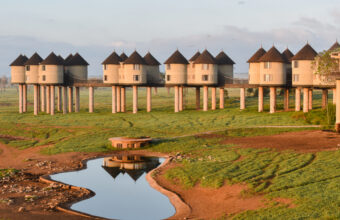
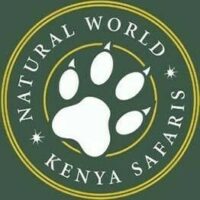
7 National Parks – Classic Kenya Safari
See the absolute best of Kenya's national parks
9 daysFrom $1,610Featured toursView all


7 National Parks – Classic Kenya Safari
See the absolute best of Kenya's national parks
9 daysFrom $1,610I'm here to answer any of your questions








